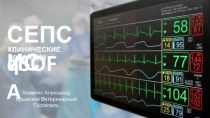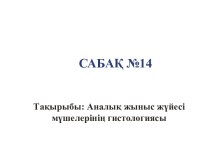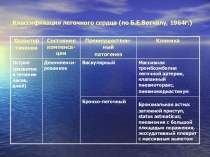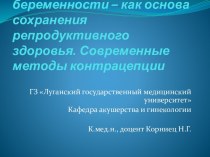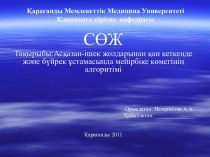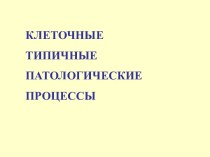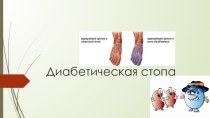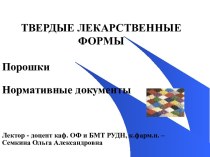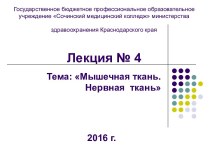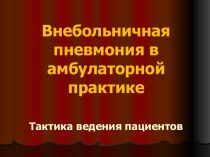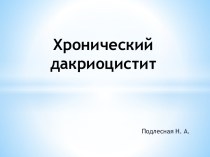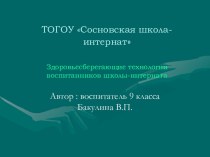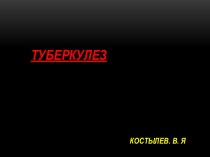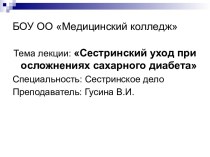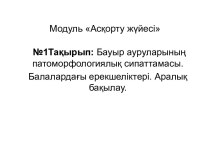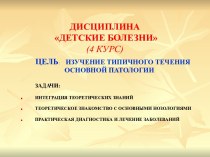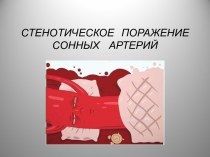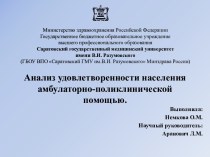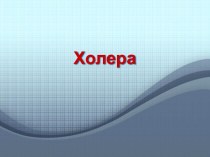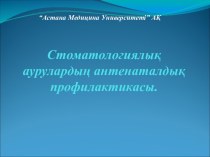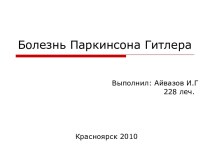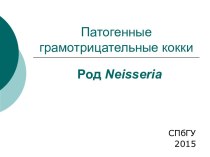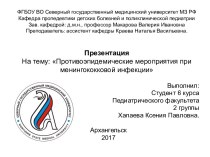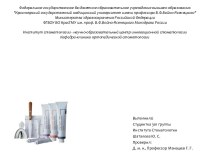- Главная
- Разное
- Бизнес и предпринимательство
- Образование
- Развлечения
- Государство
- Спорт
- Графика
- Культурология
- Еда и кулинария
- Лингвистика
- Религиоведение
- Черчение
- Физкультура
- ИЗО
- Психология
- Социология
- Английский язык
- Астрономия
- Алгебра
- Биология
- География
- Геометрия
- Детские презентации
- Информатика
- История
- Литература
- Маркетинг
- Математика
- Медицина
- Менеджмент
- Музыка
- МХК
- Немецкий язык
- ОБЖ
- Обществознание
- Окружающий мир
- Педагогика
- Русский язык
- Технология
- Физика
- Философия
- Химия
- Шаблоны, картинки для презентаций
- Экология
- Экономика
- Юриспруденция
Что такое findslide.org?
FindSlide.org - это сайт презентаций, докладов, шаблонов в формате PowerPoint.
Обратная связь
Email: Нажмите что бы посмотреть
Презентация на тему Development of CNS in embrio. Clinical evaluation of abnormalities
Содержание
- 2. Anatomo-physiological peculiaritiesof CNS in children and their clinical importance
- 3. The central nervous system appears at the
- 4. Its lateral edges soon become elevated to
- 5. Neural tube defects account for the most
- 6. Neural tube defects (NTDs) spina bifida occulta meningocele myelomeningoceleencephalocele anencephal
- 7. Neural tube defects (NTDs)can be diagnosed prenatally
- 8. Neural tube defects (NTDs)Meningocele (Meningoencephalocele) is herniation
- 9. lumbar meningomyelocele in a 3-day-infant Neural tube defects (NTDs)
- 10. The sloping forehead and small head circumference
- 11. In embryo at its cephalic end of
- 12. Hemispheres of the brain are developed from
- 13. HydranencephalyMagnetic resonance imaging (MRI) showsthe brain stem
- 14. CSF (cerebral spinal fluid)CSF flow results from
- 15. CSFHydrocephalus resulting from CSF accumulation inside the brain is called internal hydrocephalus.
- 16. The cranial computerized tomogram (CT) of the
- 17. CSF is absorbed primarily by the arachnoid
- 18. External hydrocephalus in the newborn with in utero infection of the brain (MRI)
- 19. Features of CNS in fetus and newbornThe
- 20. Features of CNS in fetus and newborn
- 21. Features of CNS in fetus and newborn
- 22. Features of CNS in fetus and newbornCentral
- 23. Features of CNS in fetus and newbornThe
- 24. Neurological examination
- 25. Neurologic evaluation of the child. Complaints&History. Seizures
- 26. Opisthotonus in a brain-injured infant. This is the tonic seizure.
- 27. Objective neurological examinationof the child should include
- 28. A well child is conscious, alert and responsive Level of consciousness (LOC)
- 29. Level of consciousness (LOC) Lethargy or pathological
- 30. Level of consciousness (LOC)This is a child
- 31. Stages of comaStupor: The stuporous patient arouses
- 32. Mental development
- 34. Head size
- 35. Enlarged head?
- 36. AF&PF
- 37. A fontanel bulging is a reliable indicator
- 38. Cranial nerves
- 40. Oculomotor (3-rd) nerve paresis: ptosis (impossibility to
- 42. Facial nerve palsyFacial nerve palsy
- 43. Facial nerve palsy. Notice the loss of
- 44. A newborn with right facial palsy
- 45. choking
- 47. Unilateral (right-side) hypoglossal (12th) nerve paresis. Tongue deviation.
- 48. Motor examination
- 50. Abnormal gaits The spastic gait Circumduction gait Cerebellar ataxia waddling gait clumsy, tentative gait
- 51. Movement disorders Paralysis (palsy) – the absence
- 52. A newborn with brachial right sided paralysis
- 53. Movement disordersDystonia - slow twisting movements of
- 54. Muscles Examination includes assessment ofmuscles’ development: wasting, pseudohypertrophy Tone: hypotonia, hypertonia Strength: increase, decrease
- 55. Posterior aspect of the legs of a
- 56. HypotoniaOn ventral suspension, the baby assumes the
- 57. Main semiotics of CNS disorders. Meningitis.
- 59. Examination for neck rigidity in older childMeningeal irritation
- 60. Brudzinski’s signMeningeal irritation
- 61. Kernig’s signMeningeal irritation
- 62. LPThe lumbar punction confirms the meningitis
- 63. Normal Values for Cerebrospinal Fluid (CSF)
- 64. CSF finding in bacterial meningitisICP -
- 65. Скачать презентацию
- 66. Похожие презентации
Anatomo-physiological peculiaritiesof CNS in children and their clinical importance
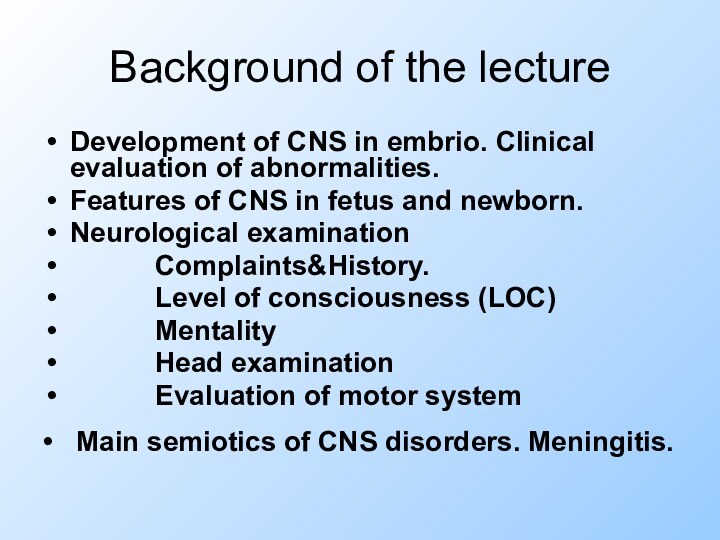
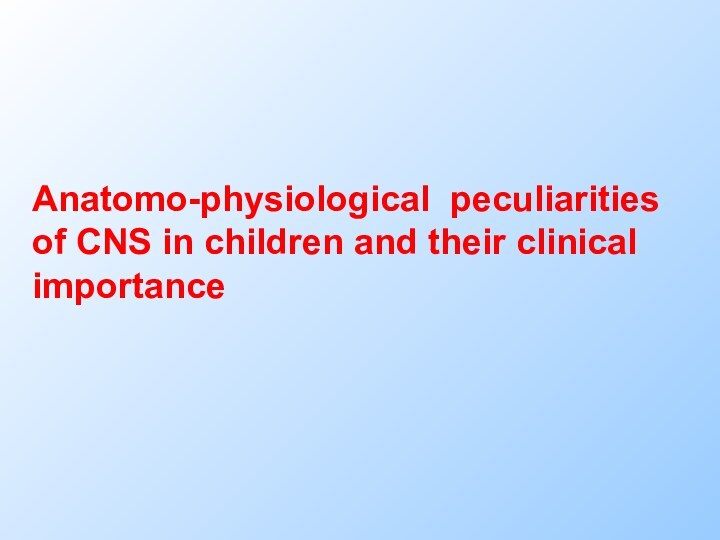
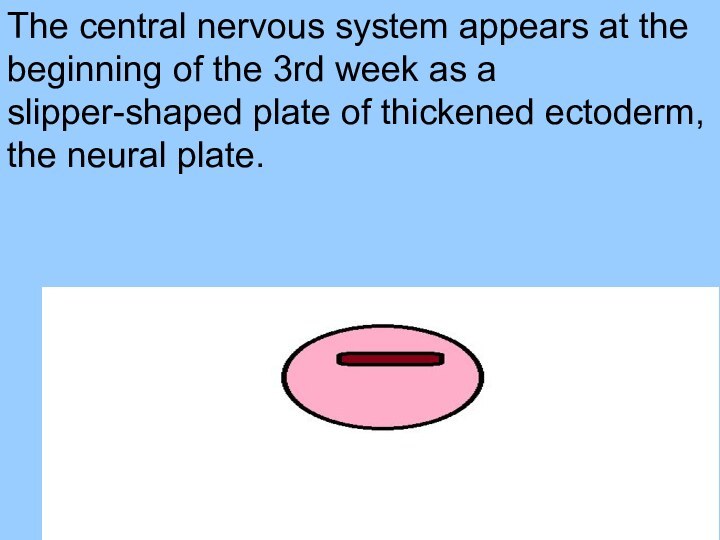
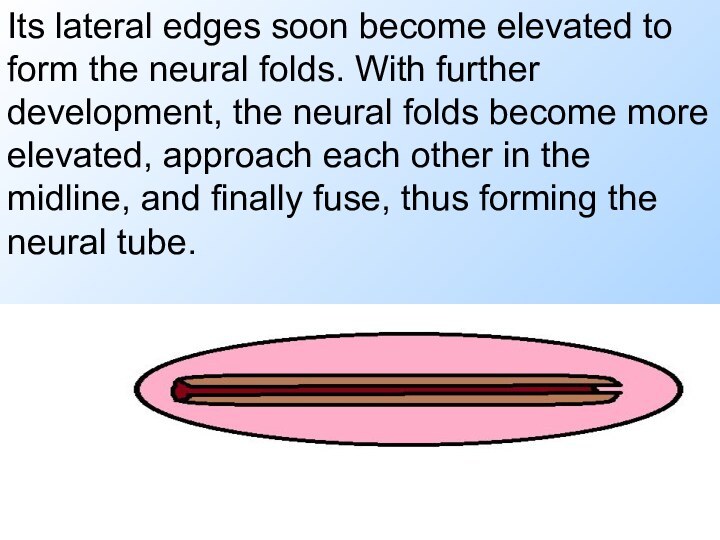
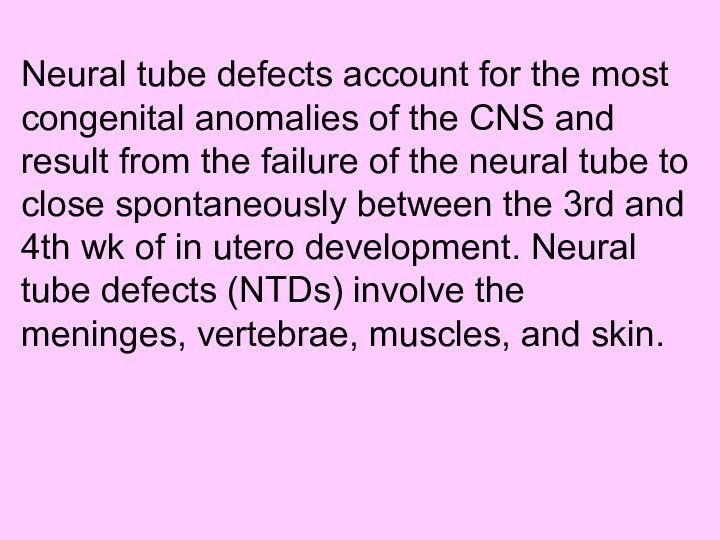
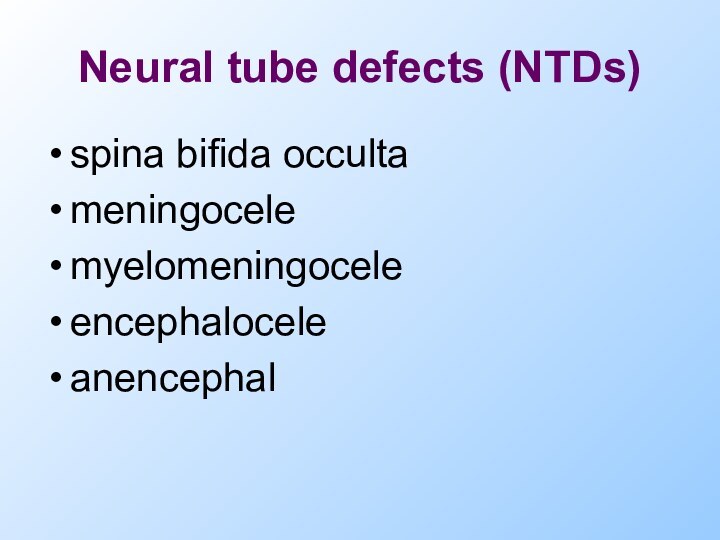

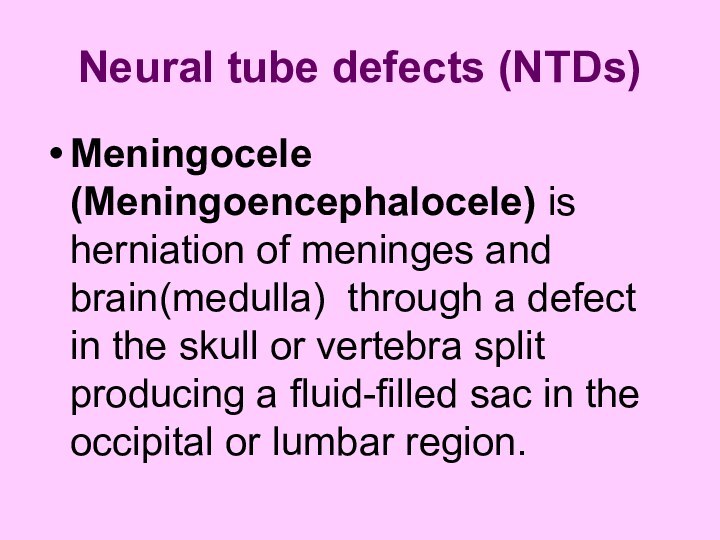


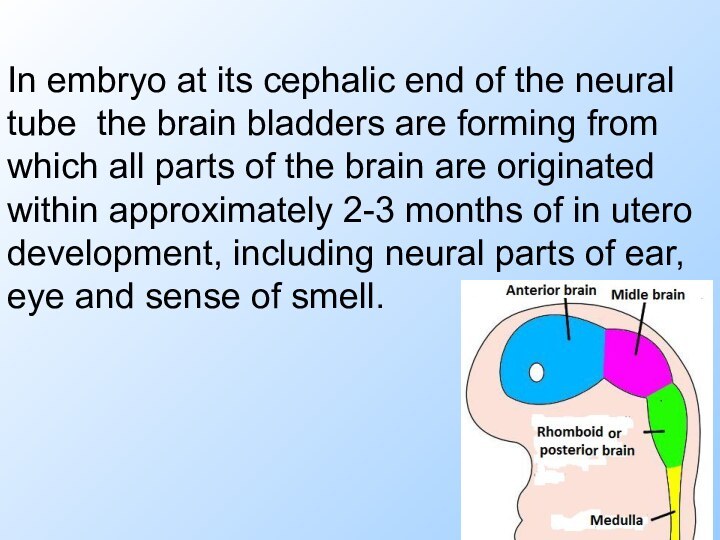
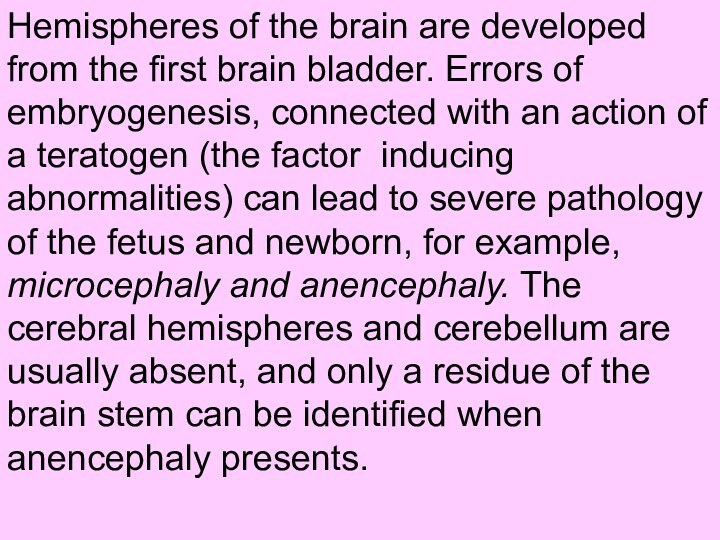
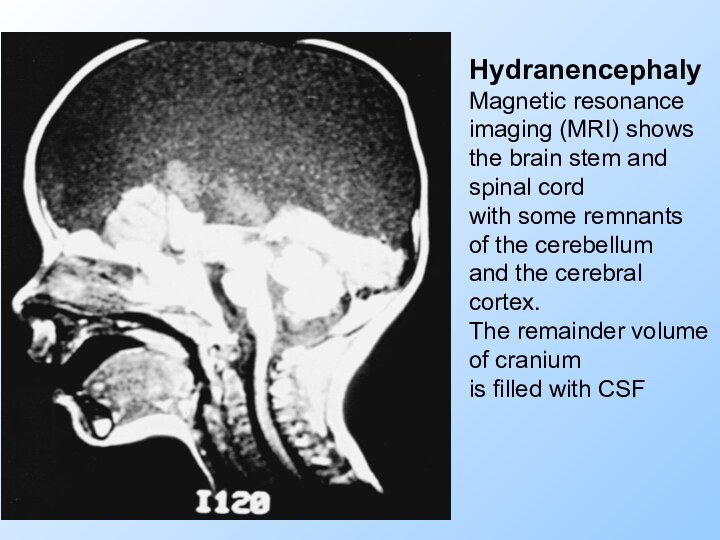
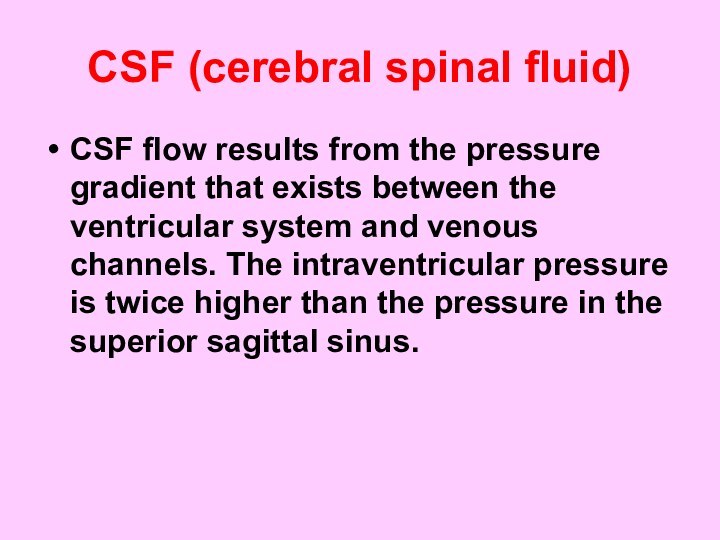
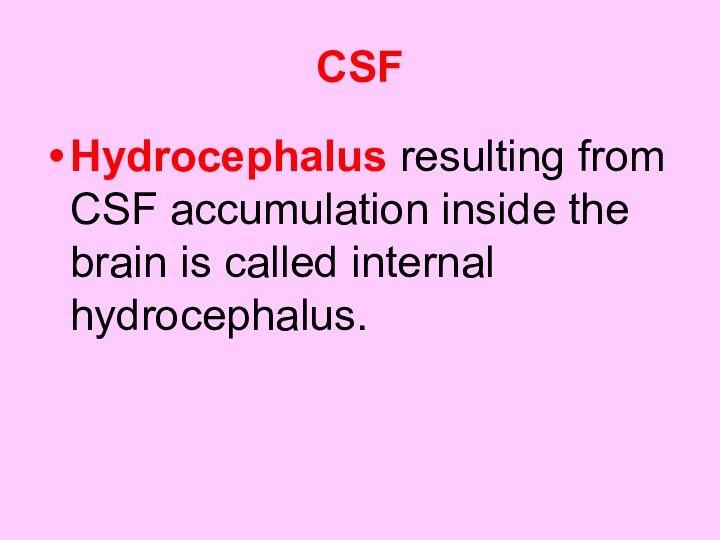
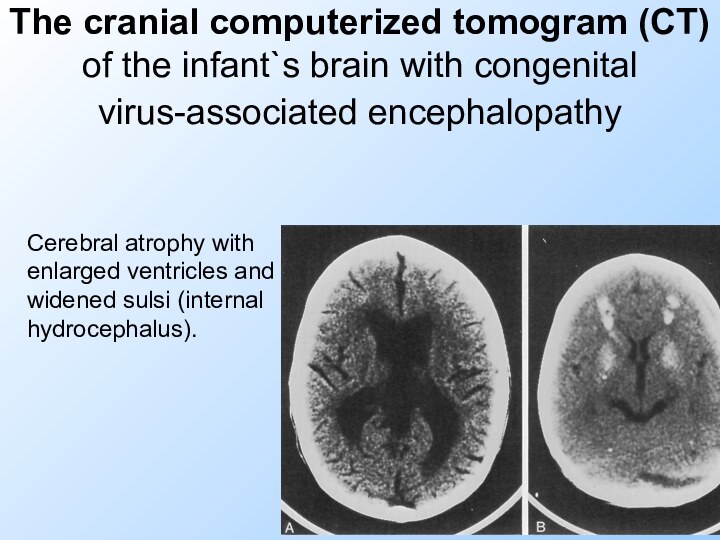
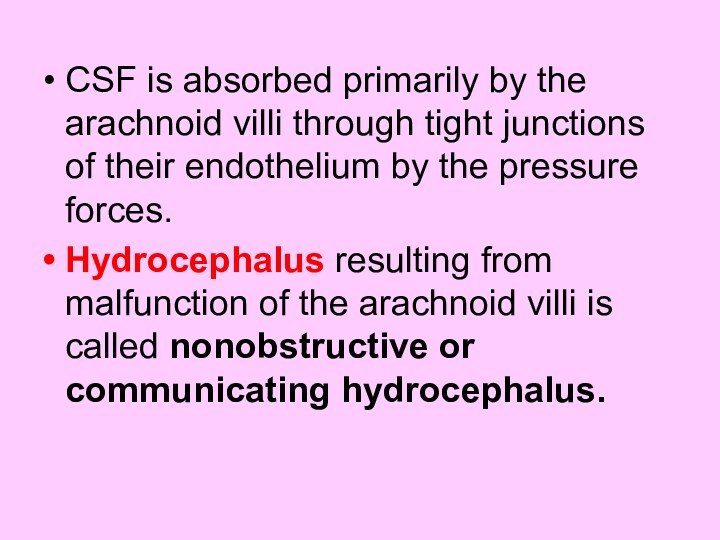

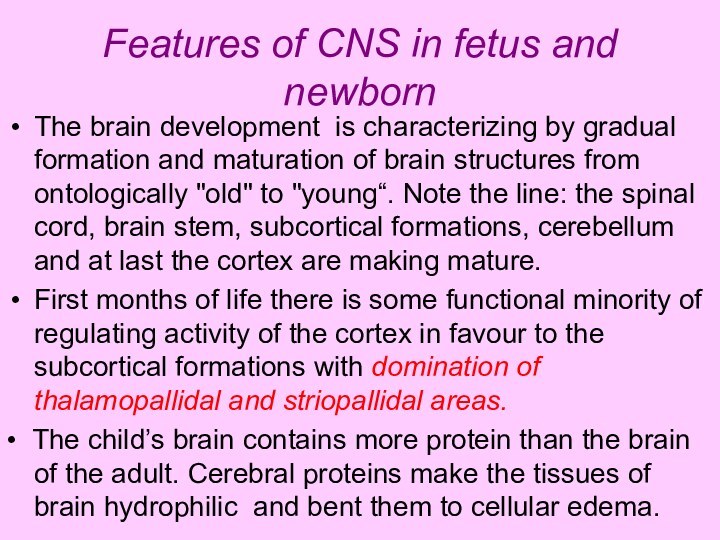
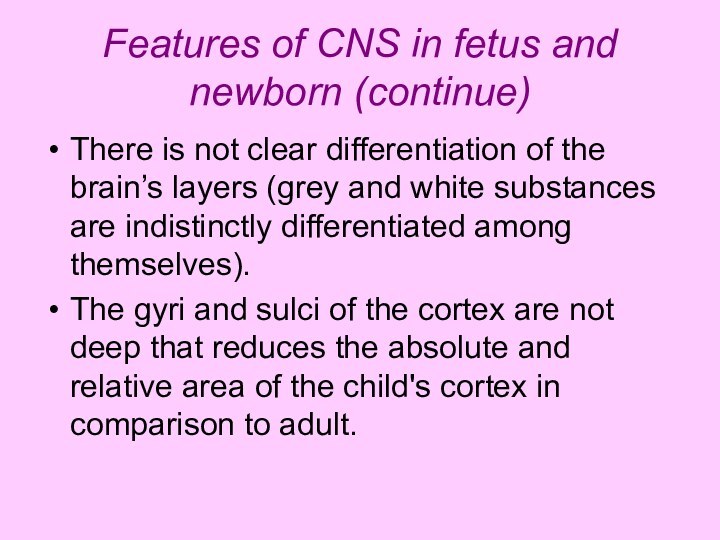
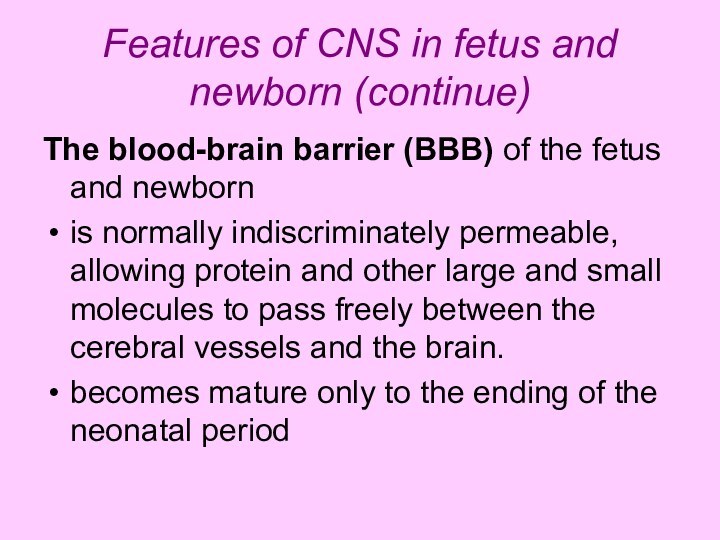
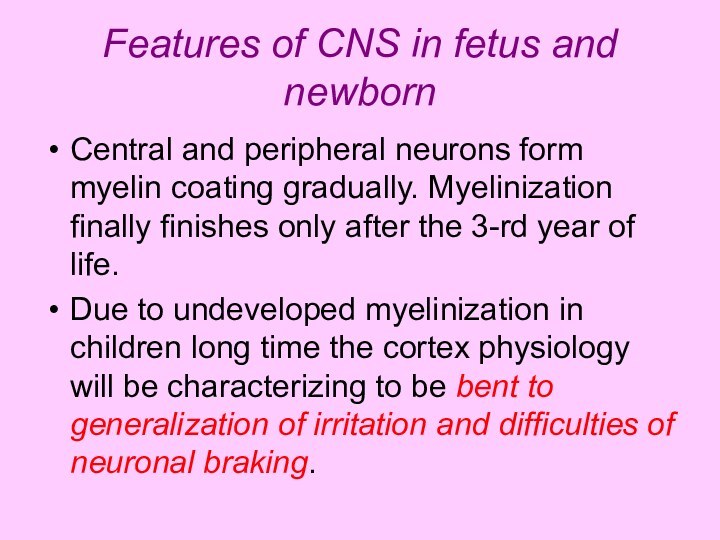

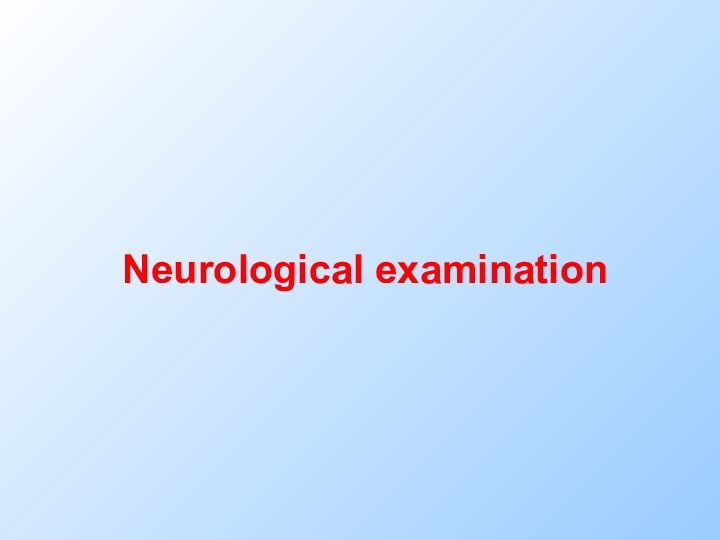
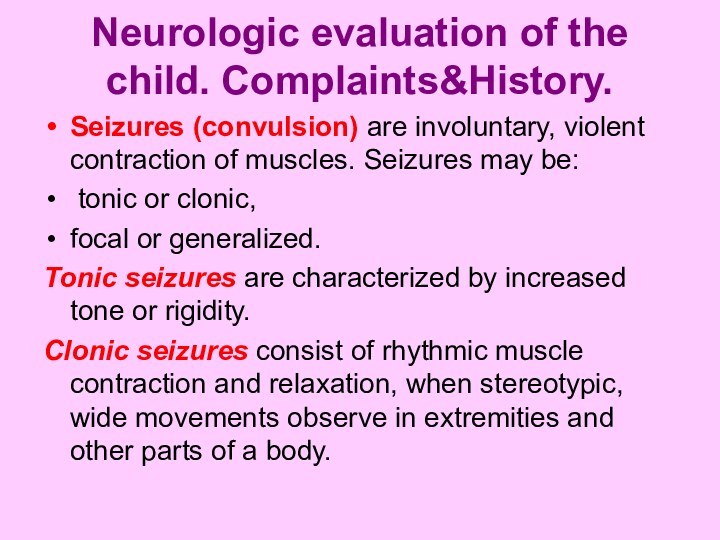
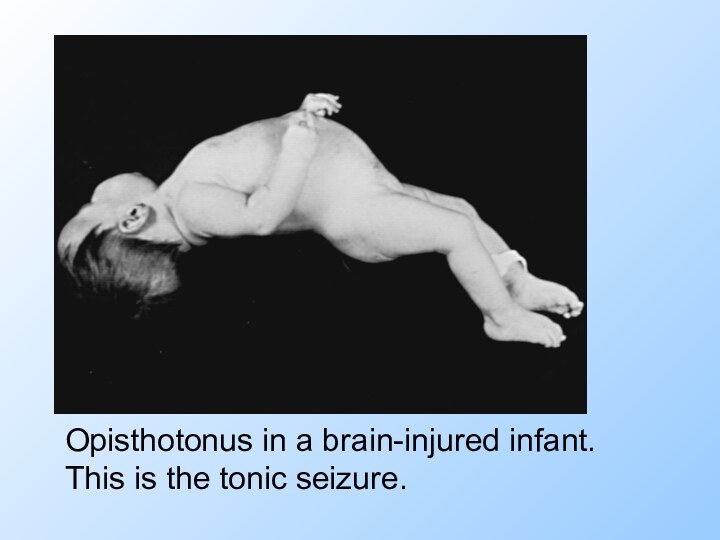
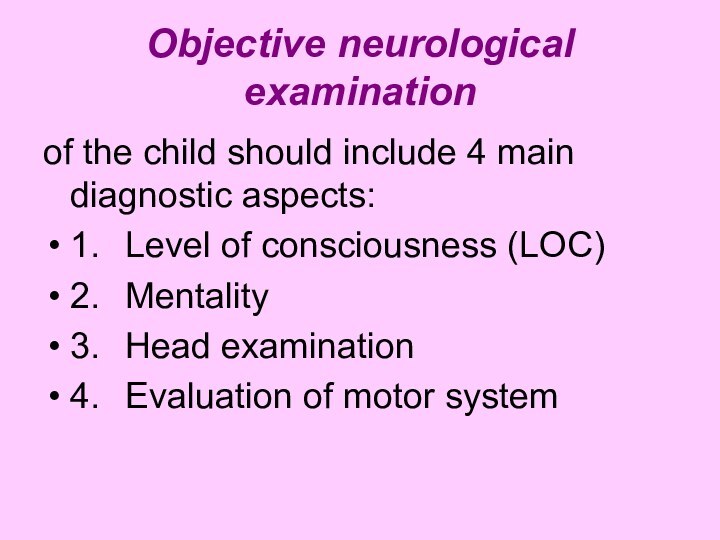
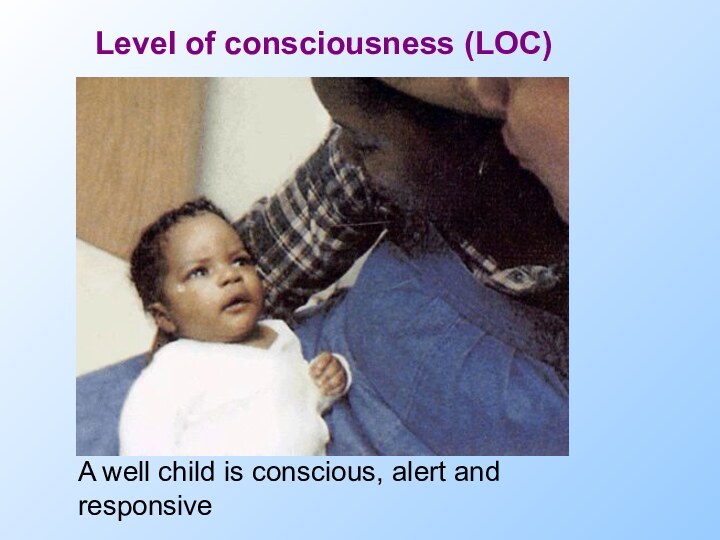
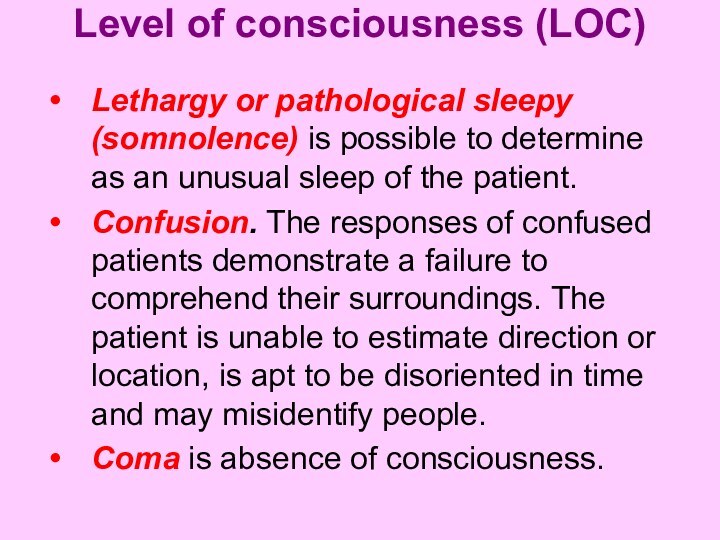
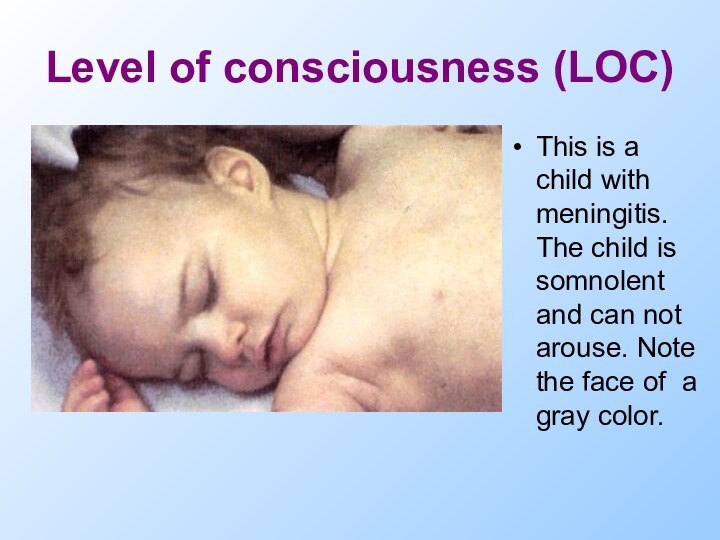

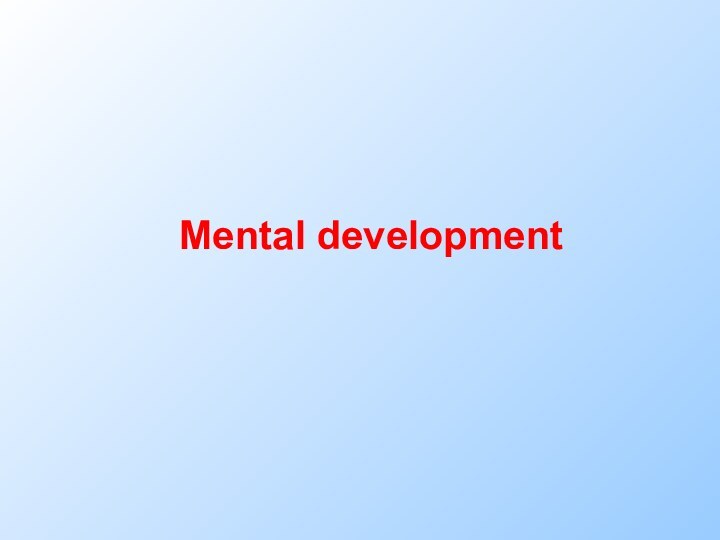
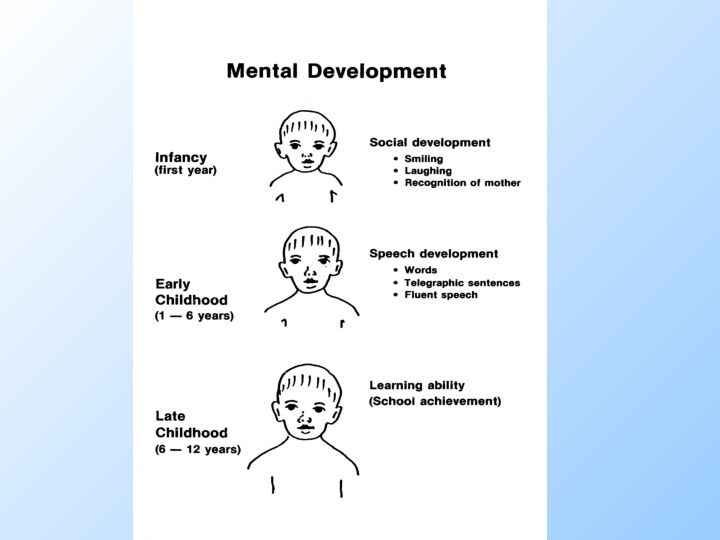
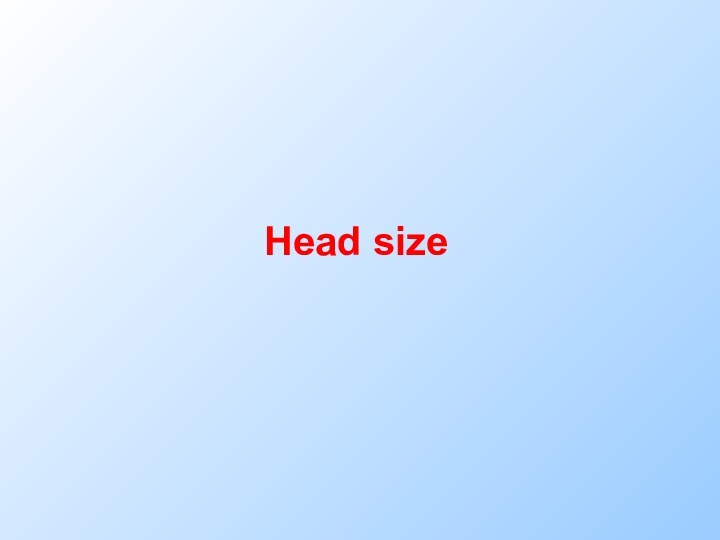
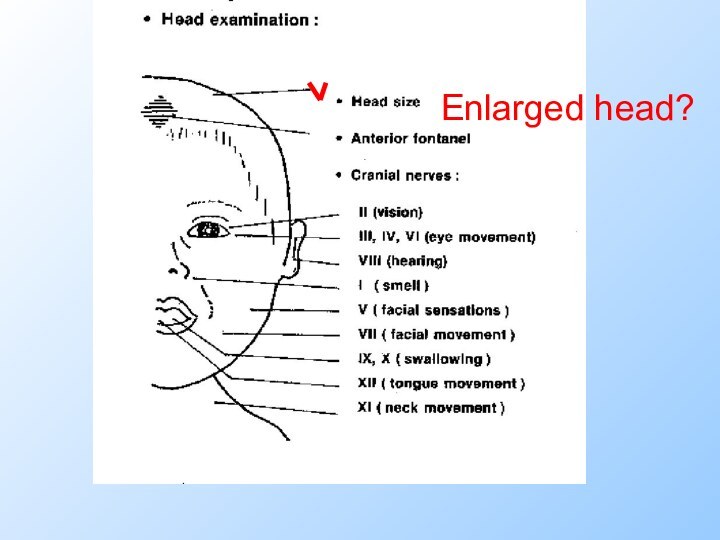

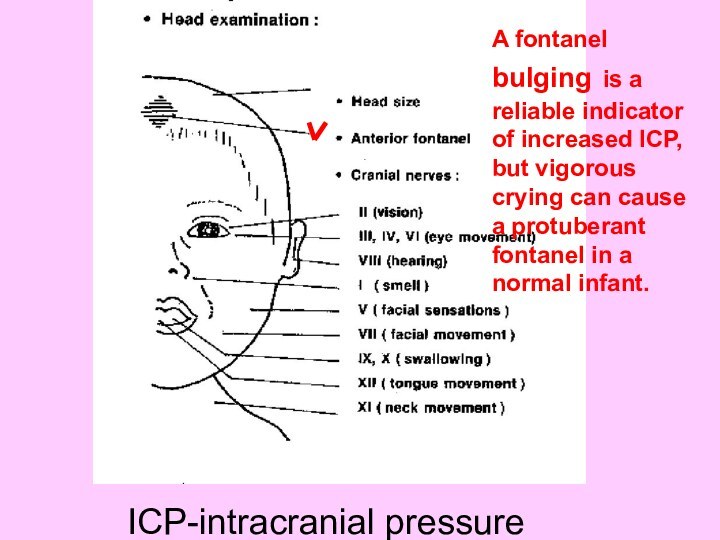
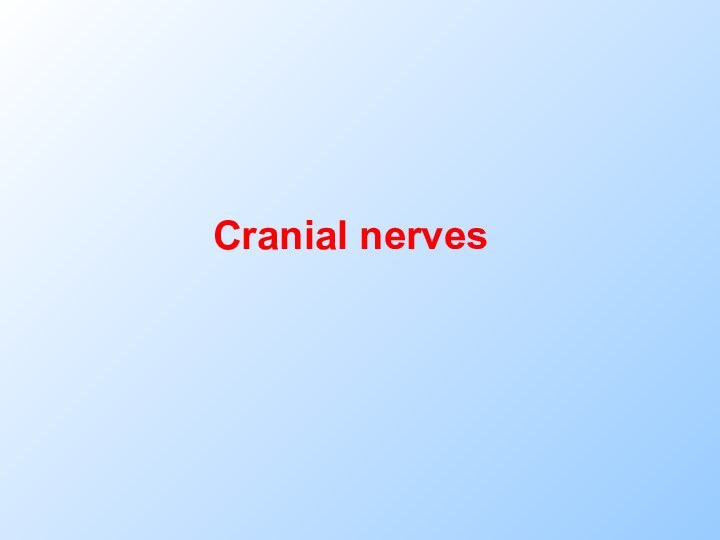
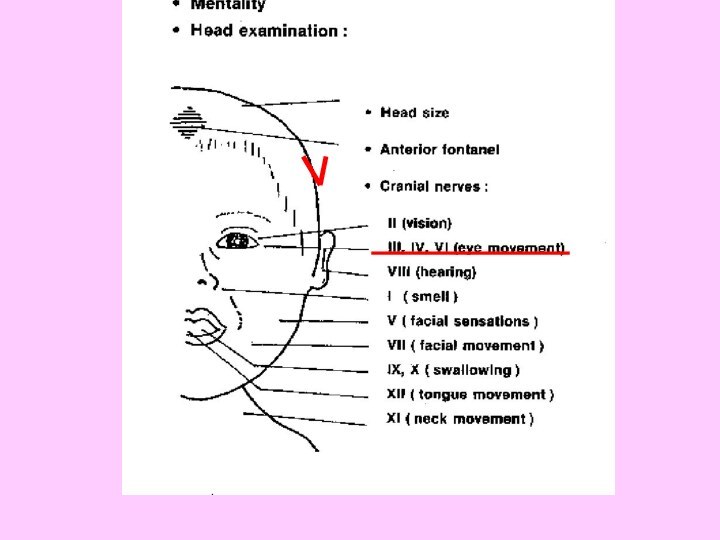

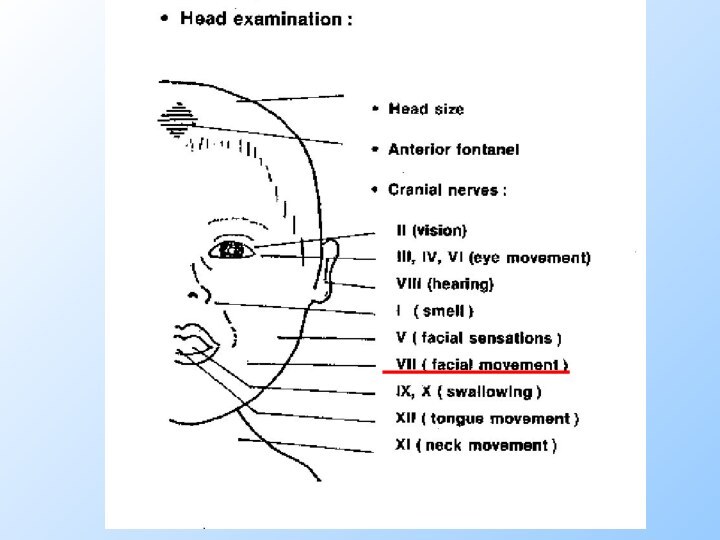


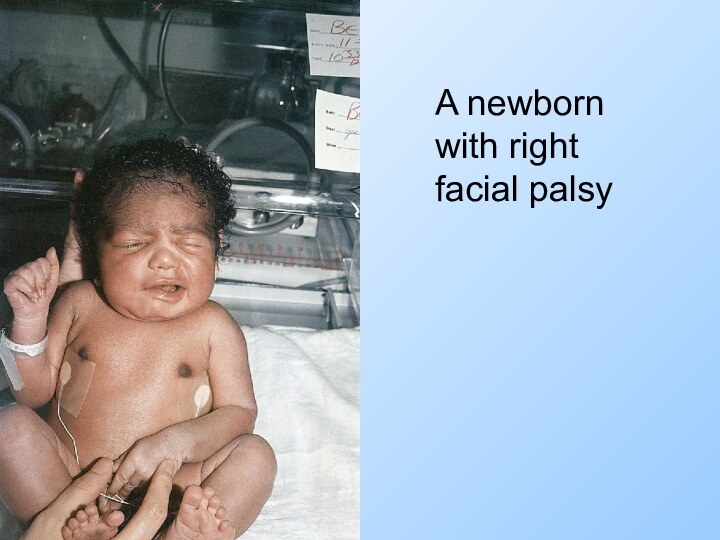
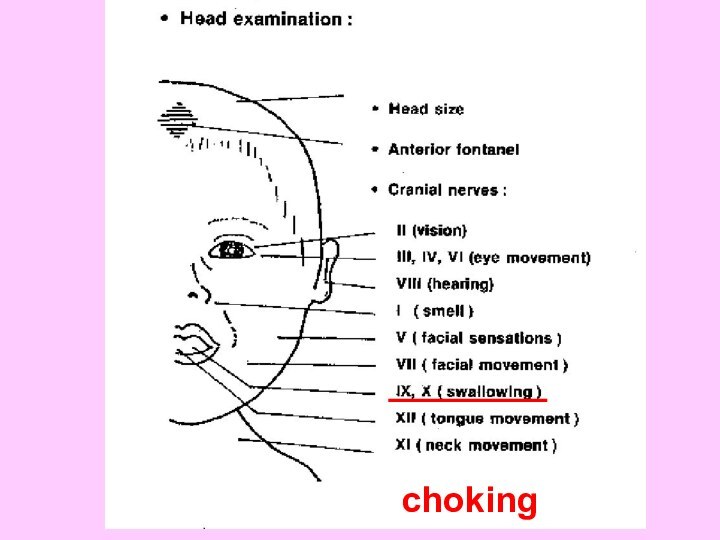
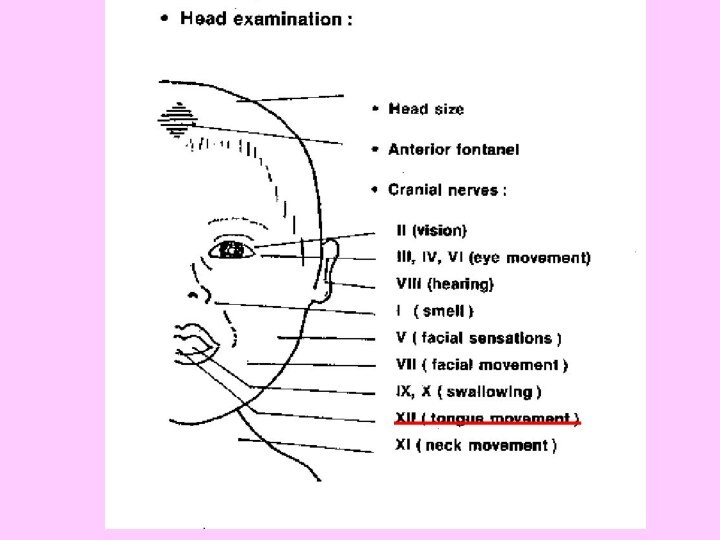

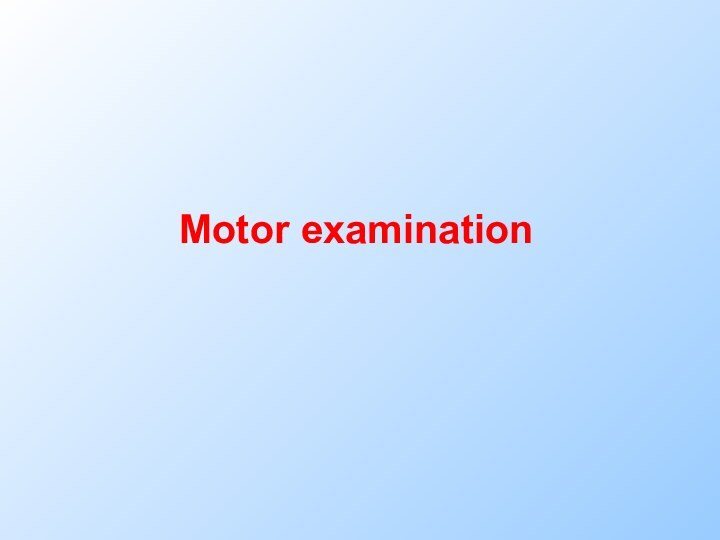

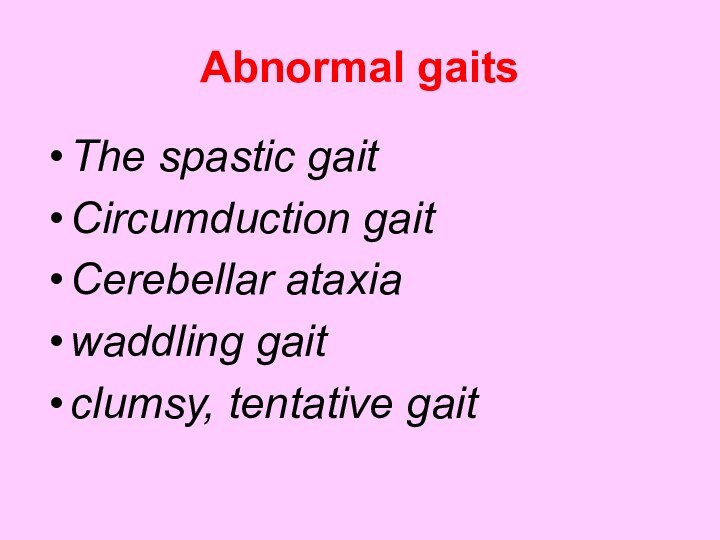
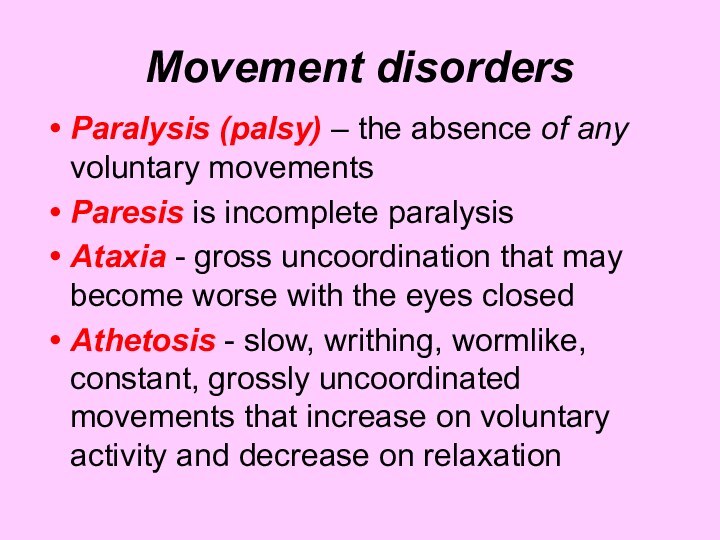
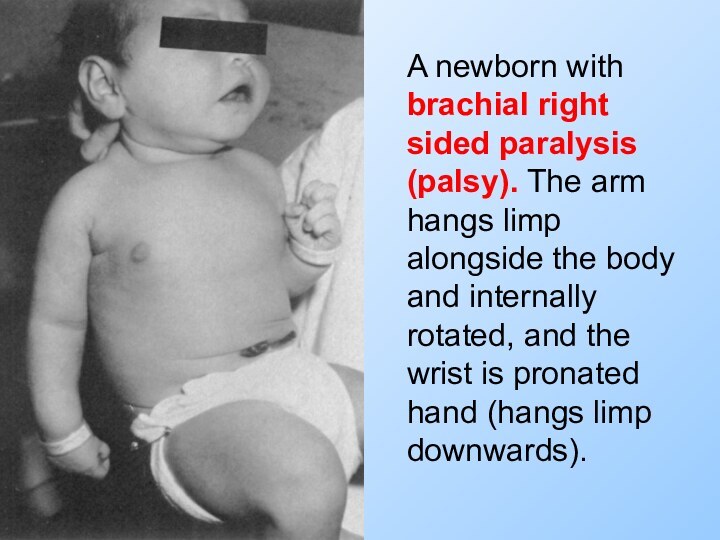
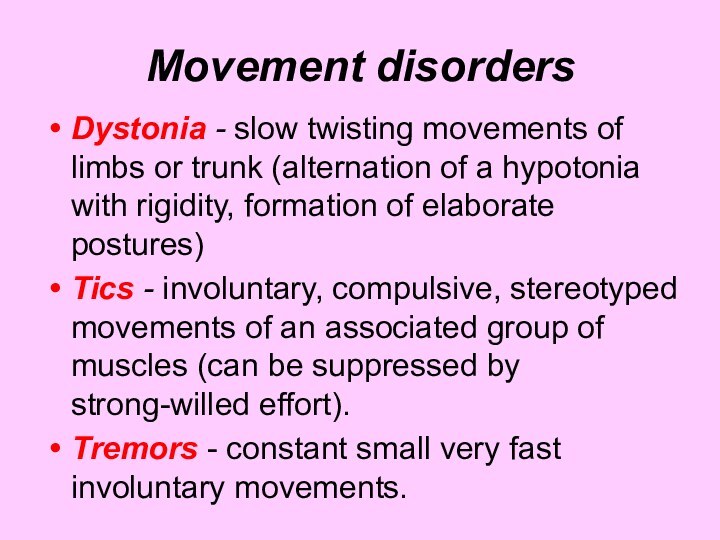
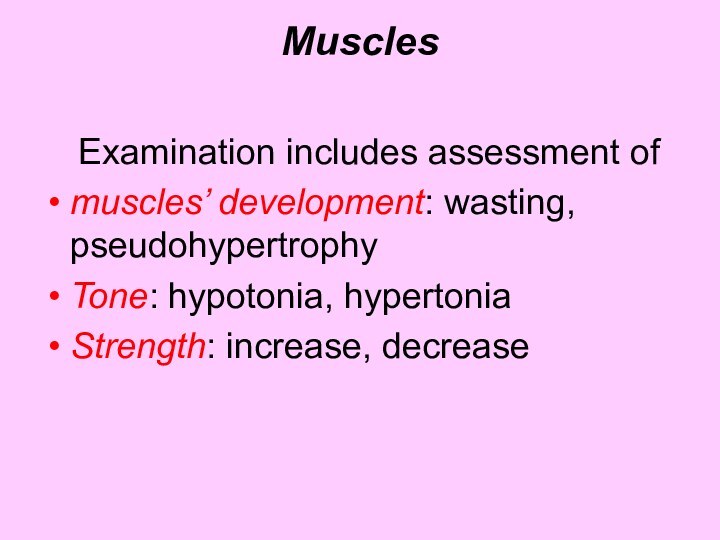

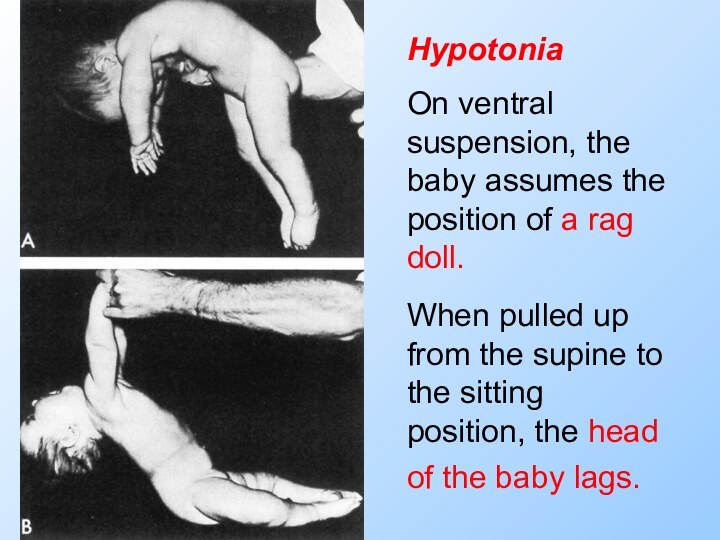
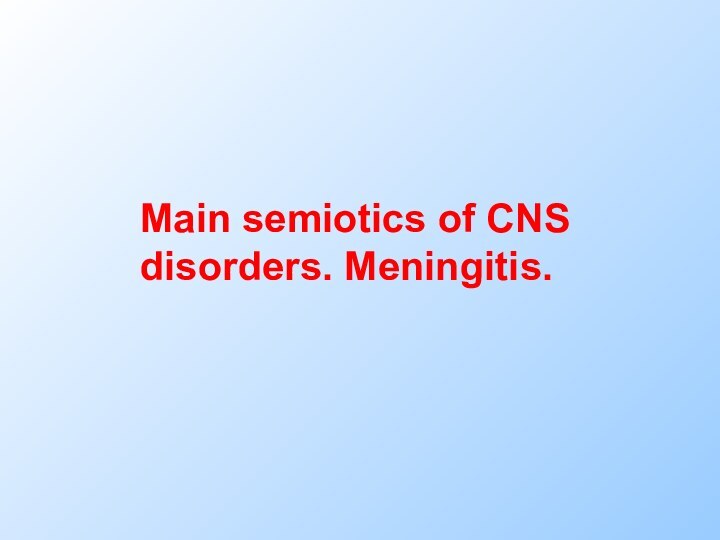
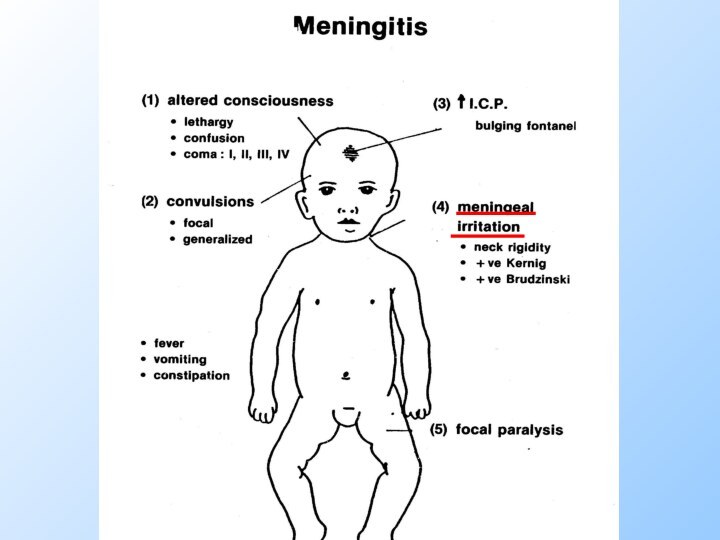
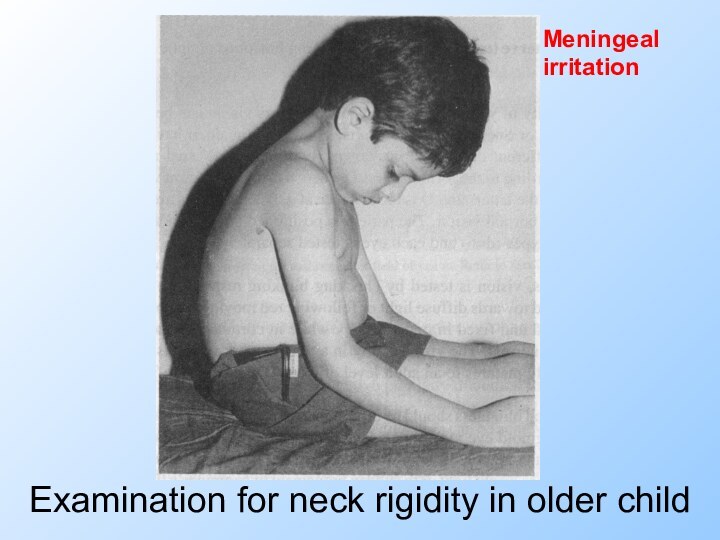

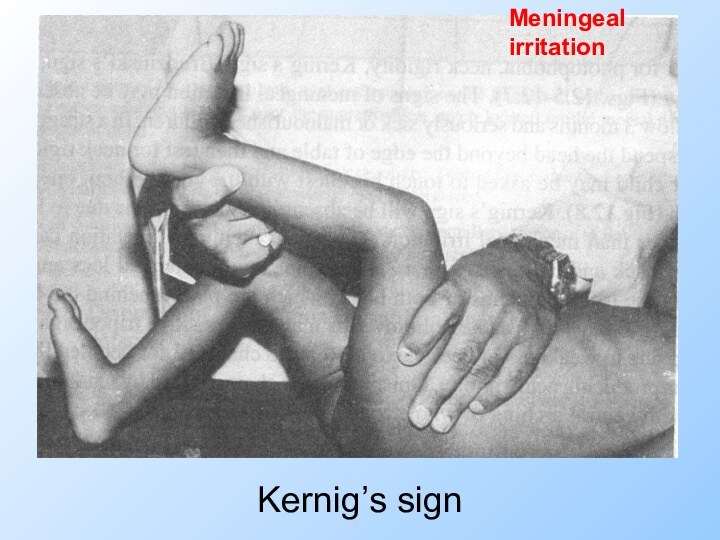
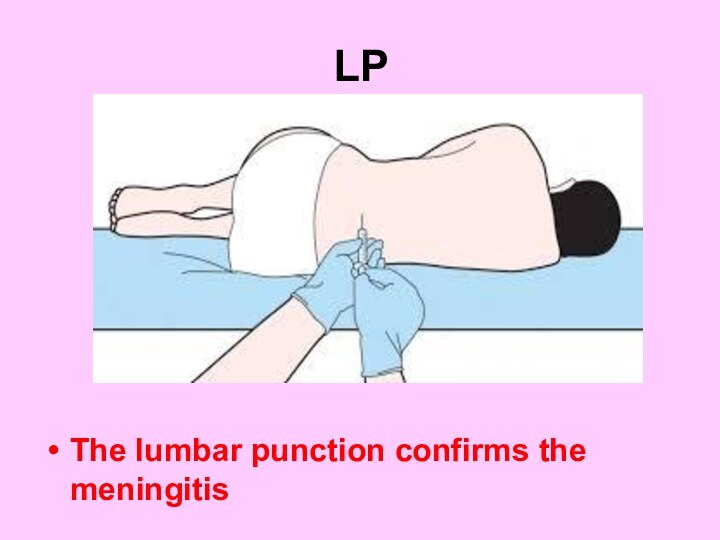
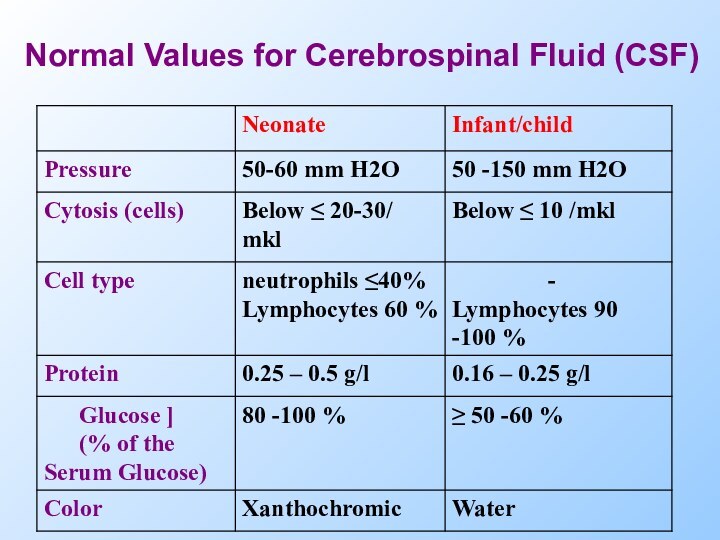
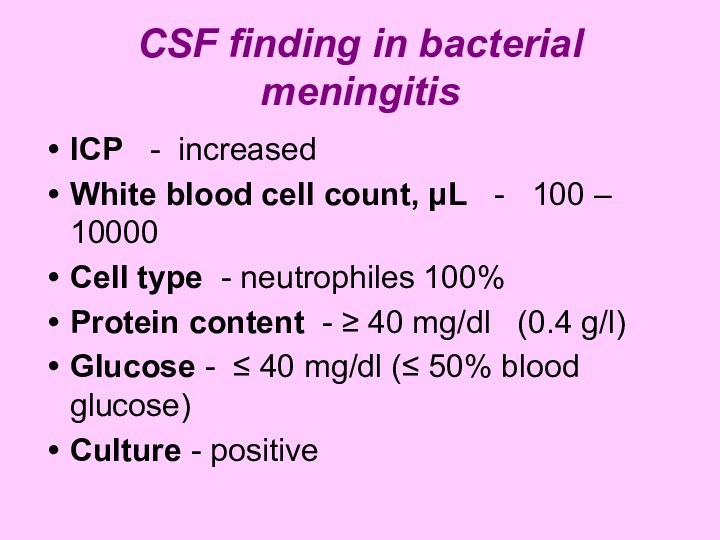
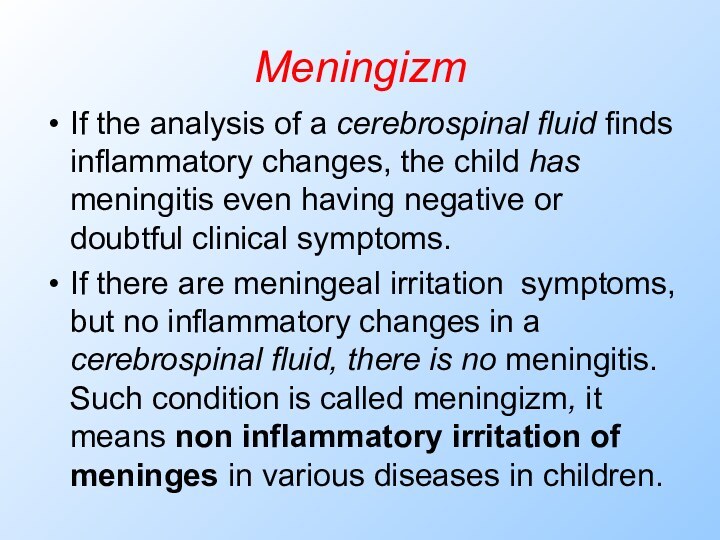
Слайд 3 The central nervous system appears at the beginning
of the 3rd week as a slipper-shaped plate of
thickened ectoderm, the neural plate.
Слайд 4
Its lateral edges soon become elevated to form
the neural folds. With further development, the neural folds
become more elevated, approach each other in the midline, and finally fuse, thus forming the neural tube.Слайд 5 Neural tube defects account for the most congenital
anomalies of the CNS and result from the failure
of the neural tube to close spontaneously between the 3rd and 4th wk of in utero development. Neural tube defects (NTDs) involve the meninges, vertebrae, muscles, and skin.
Слайд 6
Neural tube defects (NTDs)
spina bifida occulta
meningocele
myelomeningocele
encephalocele
anencephal
Слайд 7
Neural tube defects (NTDs)
can be diagnosed prenatally by
ultrasound, and by determination of ά-fetoprotein (AFP) levels in
maternal serum and amniotic fluid. The cranium or vertebra can be visualized since 12 weeks of gestation, and defects can be detected.Recent evidence indicates that folic acid (folate) reduces the incidence of NTDs in certain populations.
Слайд 8
Neural tube defects (NTDs)
Meningocele (Meningoencephalocele) is herniation of
meninges and brain(medulla) through a defect in the skull
or vertebra split producing a fluid-filled sac in the occipital or lumbar region.
Слайд 10
The sloping forehead and small head circumference
are
evident, although progressive ventricular
enlargement often subsequently occurs in
such children. Occipital meningoencephalocele
Слайд 11 In embryo at its cephalic end of the
neural tube the brain bladders are forming from which
all parts of the brain are originated within approximately 2-3 months of in utero development, including neural parts of ear, eye and sense of smell.Слайд 12 Hemispheres of the brain are developed from the
first brain bladder. Errors of embryogenesis, connected with an
action of a teratogen (the factor inducing abnormalities) can lead to severe pathology of the fetus and newborn, for example, microcephaly and anencephaly. The cerebral hemispheres and cerebellum are usually absent, and only a residue of the brain stem can be identified when anencephaly presents.
Слайд 13
Hydranencephaly
Magnetic resonance
imaging (MRI) shows
the brain stem and
spinal
cord
with some remnants
of the cerebellum
and the
cerebralcortex.
The remainder volume
of cranium
is filled with CSF
Слайд 14
CSF (cerebral spinal fluid)
CSF flow results from the
pressure gradient that exists between the ventricular system and
venous channels. The intraventricular pressure is twice higher than the pressure in the superior sagittal sinus.
Слайд 15
CSF
Hydrocephalus resulting from CSF accumulation inside the brain
is called internal hydrocephalus.
Слайд 16 The cranial computerized tomogram (CT) of the infant`s
brain with congenital virus-associated encephalopathy
Cerebral atrophy with enlarged
ventricles and widened sulsi (internal hydrocephalus). Слайд 17 CSF is absorbed primarily by the arachnoid villi
through tight junctions of their endothelium by the pressure
forces.Hydrocephalus resulting from malfunction of the arachnoid villi is called nonobstructive or communicating hydrocephalus.
Слайд 19
Features of CNS in fetus and newborn
The brain
development is characterizing by gradual formation and maturation of
brain structures from ontologically "old" to "young“. Note the line: the spinal cord, brain stem, subcortical formations, cerebellum and at last the cortex are making mature.First months of life there is some functional minority of regulating activity of the cortex in favour to the subcortical formations with domination of thalamopallidal and striopallidal areas.
• The child’s brain contains more protein than the brain of the adult. Cerebral proteins make the tissues of brain hydrophilic and bent them to cellular edema.
Слайд 20
Features of CNS in fetus and newborn (continue)
There
is not clear differentiation of the brain’s layers (grey
and white substances are indistinctly differentiated among themselves).The gyri and sulci of the cortex are not deep that reduces the absolute and relative area of the child's cortex in comparison to adult.
Слайд 21
Features of CNS in fetus and newborn (continue)
The
blood-brain barrier (BBB) of the fetus and newborn
is
normally indiscriminately permeable, allowing protein and other large and small molecules to pass freely between the cerebral vessels and the brain. becomes mature only to the ending of the neonatal period
Слайд 22
Features of CNS in fetus and newborn
Central and
peripheral neurons form myelin coating gradually. Myelinization finally finishes
only after the 3-rd year of life.Due to undeveloped myelinization in children long time the cortex physiology will be characterizing to be bent to generalization of irritation and difficulties of neuronal braking.
Слайд 23
Features of CNS in fetus and newborn
The features
of the brain vascular system of fetus when anastomoses
develop insufficiently make the brain of premature newborn easily vulnerable to hypoxia, mechanical, and thrombotic damages. This can promote for cerebral ischemia and hypoxia with form of cerebral palsy.
Слайд 25
Neurologic evaluation of the child. Complaints&History.
Seizures (convulsion)
are involuntary, violent contraction of muscles. Seizures may be:
tonic or clonic, focal or generalized.
Tonic seizures are characterized by increased tone or rigidity.
Clonic seizures consist of rhythmic muscle contraction and relaxation, when stereotypic, wide movements observe in extremities and other parts of a body.
Слайд 27
Objective neurological examination
of the child should include 4
main diagnostic aspects:
1. Level of consciousness (LOC)
2.
Mentality 3. Head examination
4. Evaluation of motor system
Слайд 29
Level of consciousness (LOC)
Lethargy or pathological sleepy (somnolence)
is possible to determine as an unusual sleep of
the patient.Confusion. The responses of confused patients demonstrate a failure to comprehend their surroundings. The patient is unable to estimate direction or location, is apt to be disoriented in time and may misidentify people.
Cоmа is absence of consciousness.
Слайд 30
Level of consciousness (LOC)
This is a child with
meningitis. The child is somnolent and can not arouse.
Note the face of a gray color.
Слайд 31
Stages of coma
Stupor: The stuporous patient arouses from
sleep only after painful stimuli. Verbal responses are slow
or even absent. The patient lapses into an unresponsive state when the stimulus ceases.Light coma: the patient has response to painful stimulus.
Deep cоmа: there is no response to painful stimulus.
Terminal coma: coma with a muscular relaxation and apnea.
Слайд 37
A fontanel bulging is a reliable indicator of
increased ICP, but vigorous crying can cause a protuberant
fontanel in a normal infant. ICP-intracranial pressure
Слайд 40 Oculomotor (3-rd) nerve paresis: ptosis (impossibility to lift
an upper eyelid) and removal of an eyeball laterally
(temporally).Слайд 43 Facial nerve palsy. Notice the loss of the
nasolabial fold and the mouth deviated to the left
when he smiles.
Слайд 50
Abnormal gaits
The spastic gait
Circumduction gait
Cerebellar
ataxia
waddling gait
clumsy, tentative gait
Слайд 51
Movement disorders
Paralysis (palsy) – the absence of
any voluntary movements
Paresis is incomplete paralysis
Ataxia - gross
uncoordination that may become worse with the eyes closedAthetosis - slow, writhing, wormlike, constant, grossly uncoordinated movements that increase on voluntary activity and decrease on relaxation
Слайд 52 A newborn with brachial right sided paralysis (palsy).
The arm hangs limp alongside the body and internally
rotated, and the wrist is pronated hand (hangs limp downwards).
Слайд 53
Movement disorders
Dystonia - slow twisting movements of limbs
or trunk (alternation of a hypotonia with rigidity, formation
of elaborate postures)Tics - involuntary, compulsive, stereotyped movements of an associated group of muscles (can be suppressed by strong-willed effort).
Tremors - constant small very fast involuntary movements.
Слайд 54
Muscles
Examination includes assessment of
muscles’ development: wasting,
pseudohypertrophy
Tone: hypotonia, hypertonia
Strength: increase, decrease
Слайд 55
Posterior aspect of the legs of a father
and his 6-year-old son with a rare autosomal dominant
muscular dystrophy. Hypertrophy of the calves resembles Duchenne muscular dystrophy
Слайд 56
Hypotonia
On ventral suspension, the baby assumes the position
of a rag doll.
When pulled up from the
supine to the sitting position, the head of the baby lags.
Слайд 64
CSF finding in bacterial meningitis
ICP - increased
White
blood cell count, μL - 100 –
10000Cell type - neutrophiles 100%
Protein content - ≥ 40 mg/dl (0.4 g/l)
Glucose - ≤ 40 mg/dl (≤ 50% blood glucose)
Culture - positive
